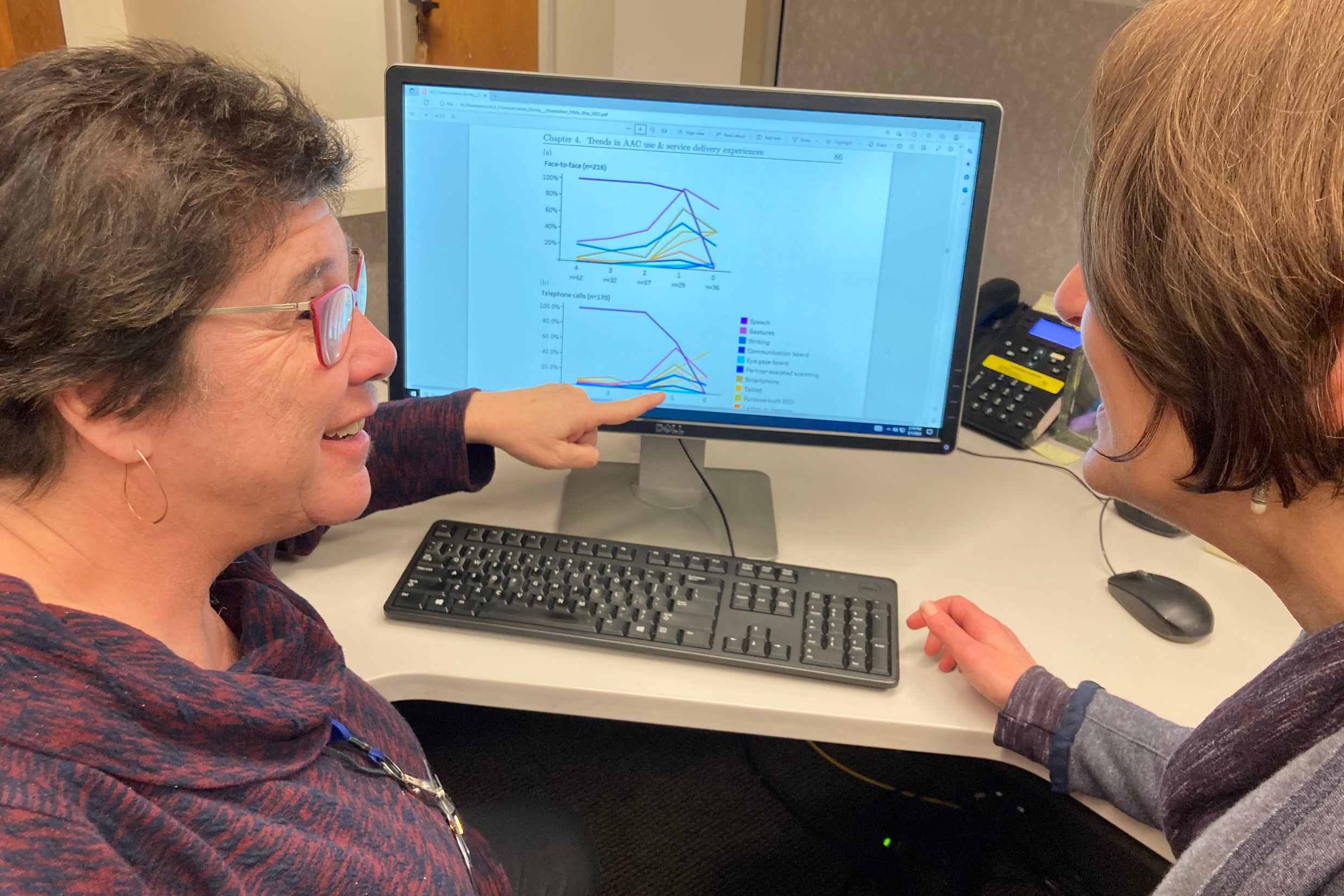SSVEP BCI and Eye Tracking Use by Individuals with ALS

What is the name of the article?
SSVEP BCI and eye tracking use by individuals with late-stage ALS and visual impairments
“Communication technology for people with late-stage ALS and poor eye control”
What was the goal of this study?
Some people with ALS cannot speak or type messages in a computer or communication device, so they have a hard time talking with others. They may also have changes to the muscles that control how their eyes move, which can make it hard to use eye tracking systems. We wanted to see if our typing system, called Shuffle Speller, worked better than other systems for people with ALS and poor eye control. Two people with ALS tried using Shuffle Speller with eye tracking and with a SSVEP brain-computer interface (BCI). The BCI system was created to let them control Shuffle Speller without moving their eyes at all.
What did we find?
People could type better with BCI Shuffle Speller than eye tracking Shuffle Speller, and they liked the BCI version better. But, typing with Shuffle Speller was very slow, and some days it didn’t work very well. Typing was harder when the person using Shuffle Speller was tired or sick, or when the equipment broke down.
What did we learn?
Shuffle Speller may work better than other systems for some people with ALS and poor eye movement. Shuffle Speller and other systems like it need to be made better so that they can help people communicate.
Why is this important?
People who cannot speak or move their bodies much often have a hard time letting others know their thoughts, feelings, and needs. There are tools that allow people to control a computer and type messages with very little effort, like lifting a finger or moving your eyes, but some people with ALS are not able to use them. It is important to find new ways for people to use technology so they can communicate, even when they are not able to move.
Who are the authors of the study?
Betts Peters1, Steven Bedrick1, Shiran Dudy1, et al.
Authors are from: 1. Institute on Development and Disability, Oregon Health & Science University, Portland, OR
Who participated in the study?
There were two participants in this study.
| Participant 1 | Participant 2 |
|---|---|
| 45 | 67 |
| Participant 1 | Participant 2 |
|---|---|
| Male | Male |
| Participant 1 | Participant 2 |
|---|---|
| 23 | 18 |
| Participant 1 | Participant 2 |
|---|---|
| 12 | 7 |
| Participant 1 | Participant 2 |
|---|---|
| Eye and facial movements only | Eye, facial, and left thumb movements only |
For more details about study participants, please see the full text article.
Key Words:
Brain-computer interface (BCI): Technology that allows people to control a computer or other electronic equipment using only sig-nals from their brain without moving their muscles.
Eye Tracking: technology that uses a special camera so people can control a computer or other electronic equipment just by moving their eyes.
Steady state visual evoked potentials (SSVEP): a kind of brain wave that happens when you look at a flashing light.
ALS (Amyotrophic lateral sclerosis): a disease that makes people lose the ability to use their muscles over time.
Article Citation
Peters, B., Bedrick, S., Dudy, S., Eddy, B., Higger, M., Kinsella, M., McLaughlin, D., Memmott, T., Oken, B., Quivira, F., Spaulding, S., Erdogmus, D., & Fried-Oken, M. (2020). SSVEP BCI and eye tracking use by individuals with late-stage ALS and visual impairments. Front Hum Neurosci, 14, 457. https://doi.org/10.3389/fnhum.2020.595890